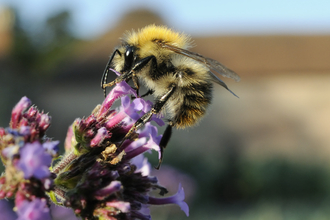If we were to shrink down to a bee's size, a gentle breeze would feel like gale force winds, icy frosts would appear as a dangerous Arctic tundra and raindrops would seem the size of truck tyres.
Not only do pollinators have to battle with harsher conditions when autumn and winter come calling, the nectar-rich flowers they feast on become far and few between.
The colder months are a real challenge for precious pollinators like bees, butterflies, hoverflies and moths, but you can help to support them by providing some critical resources in your garden.


















